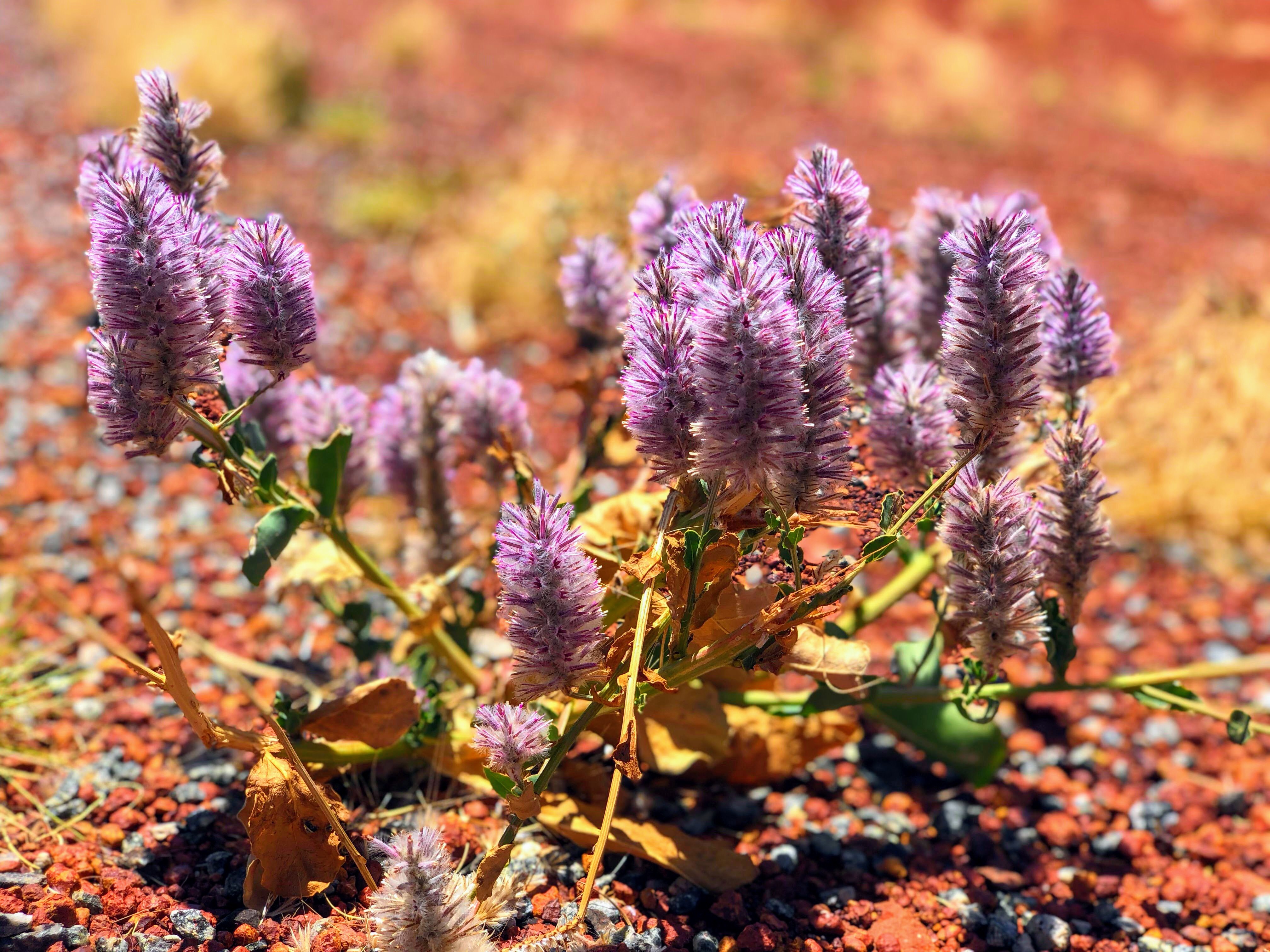
Broome to Exmouth via The Claw, Australia’s Hottest Town, and Two Very Long Beaches
We loved Broome, but as usual, there’s so much more to see and do and experience, so back to the road it was for your friendly yellow Jeepers!
We’re super excited for our next major destination – Exmouth & Cape Range National Park, home of Ningaloo Reef, which is home to heaps of sea life in the form of fish, sharks, turtles, whales, and dolphins. The best part? Whereas you need to book a tour or hire a boat to see the Great Barrier Reef, Ningaloo Reef is swimmable from shore – sometimes less than 50 metres out from the beach.
But first, we need to get there. If this trip has taught us nothing, it’s that the fun is in the journey, not only the destination! Here’s a map of the journey so far – the route covered in this post is in green, previously covered routes are in red.

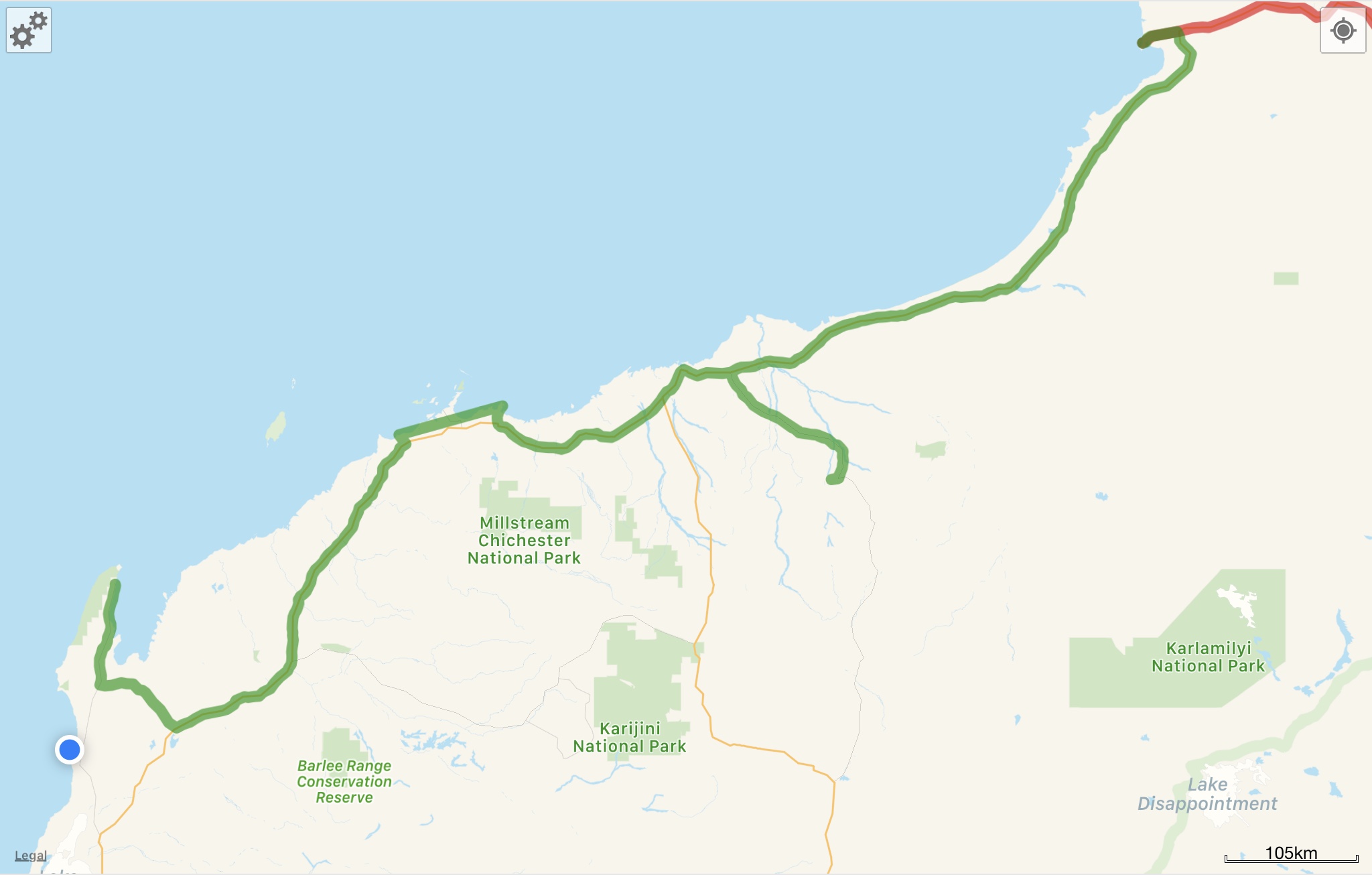
It’s about 1,400 km from Broome to Exmouth on the sealed Highway 1, and we planned to split this drive up into at least 3 parts, since as usual, Australia being so vast and interesting, there was some cool stuff to see along the way.

Our first sightseeing stop outside of Broome was a place called “80 Mile Beach”. There are many beaches named for their length up this way, seems like there’s just so much beach that it wasn’t possible to find creative or traditional names for them all! 80 Mile Beach was definitely the hottest place we visited – we intended to stop for lunch on the beach, but it was an almost unbearable 44ºC / 111ºF. We moved on after a short walk on the beach and dipping our toes in the water.


We camped at a roadside free camp called “The Claw” that first night out of Broome. This site was pretty cool, basically you pull off the road onto a dirt track, and find a spot amidst some rocky outcrops and mesas, one of which looks like a huge robot claw. It’s isolated and peaceful, but there was one downside…the flies! Holy moly the flies. I’ve written about Australian bush flies before, but I’m not sure our Canadian and American friends really get what it’s all about to be harassed by these flies. They don’t bite, so at least there’s that, but it’s not much of a consolation that they love to LICK you. They are obsessed with landing on any exposed skin, especially your face, and crawling all around in a happy trance, licking up who knows what – sweat, salt, eyeball juice, I don’t know.
They’re not shy, either, so don’t think they’re like a North American fly that you can just wave away. If these flies find a spot on you they like, there’s no dissuading them – they’re super persistent.
So yes. The flies chased us inside the tent until after sunset (when they all go to sleep). Just another quirk of around-Australia travel!
The next day we were up early and packed up by 7:30am (to beat the flies!) and it was off to check out another one of the Australian Bush Pubs on the World’s Longest Pub Crawl: The Ironclad Hotel in Marble Bar. Marble Bar is already famous as Australia’s Hottest Town, holding the Guinness World Record for most consecutive days above 38ºC / 100ºF (161 consecutive days in 1924 in case you were wondering).
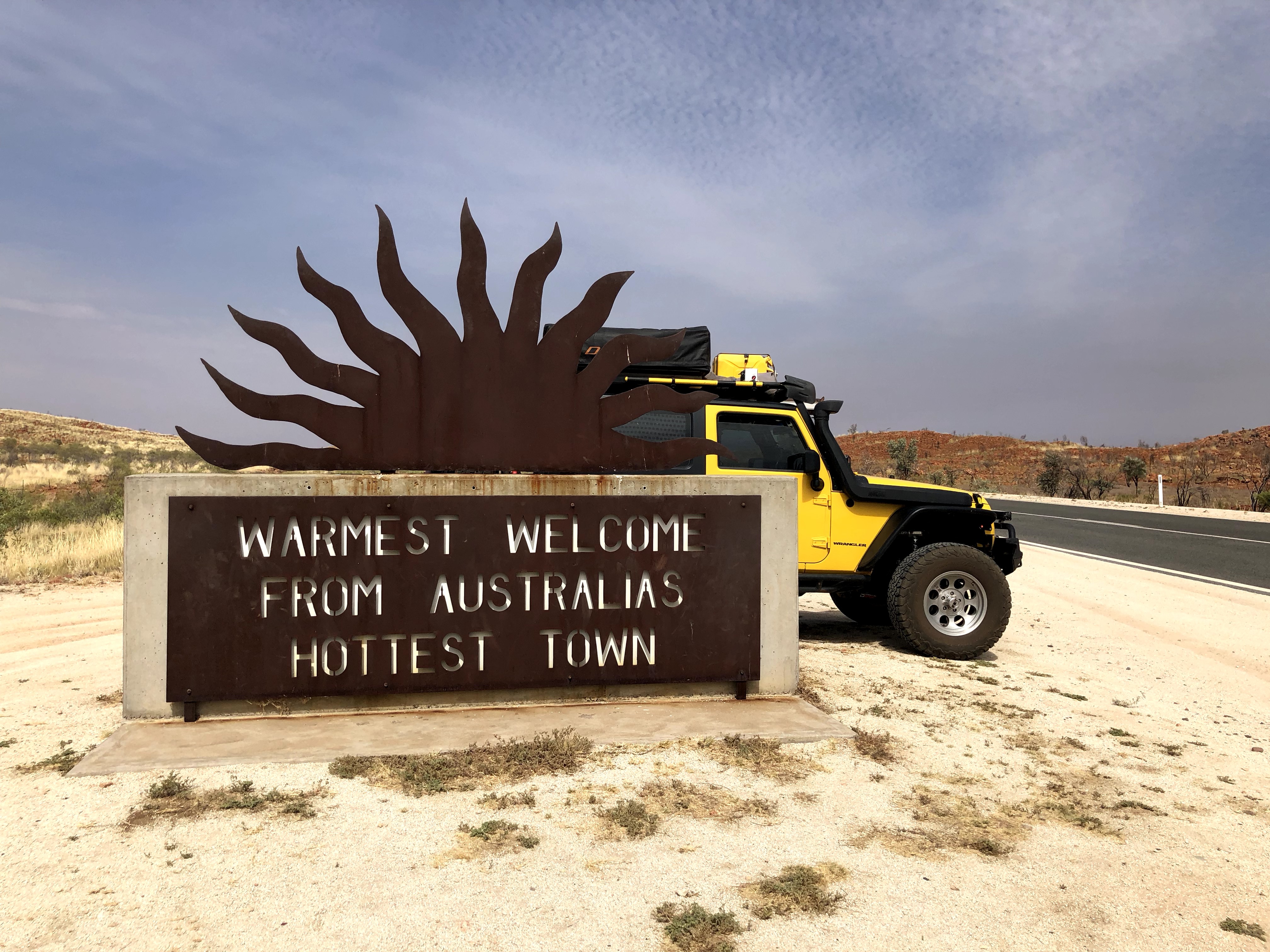
Marble Bar’s namesake is a deposit of Jasper (a semi-precious stone) just outside the town, which to be fair does look an awful lot like marble. There’s also a permanent pool there, which you can swim in if you like.

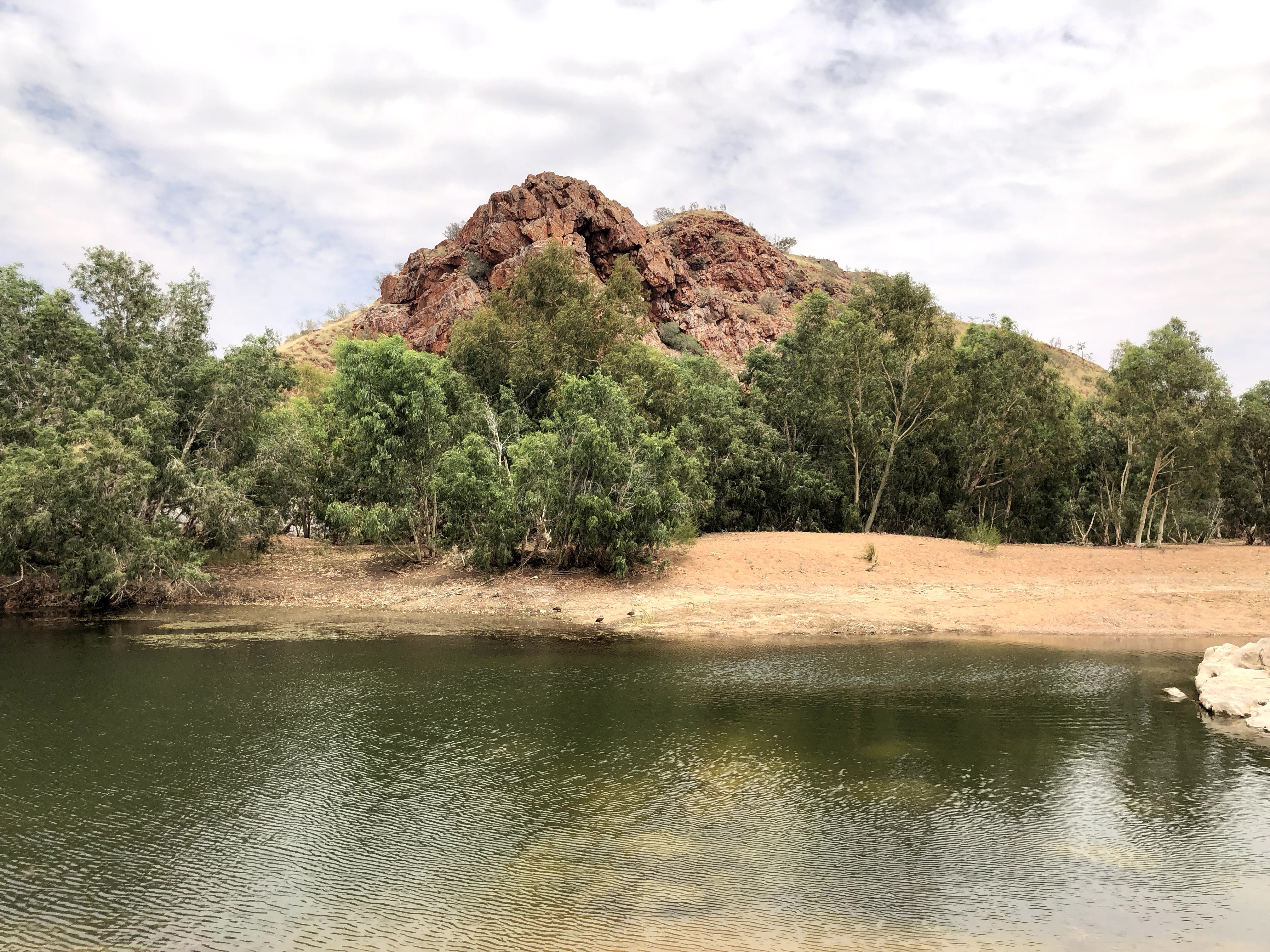
After a bit of exploring (and some FaceTime with family and friends) it was over to the pub, which was due to open at noon. We joined a small crowd of locals waiting outside at around 5 minutes to 12, and struck up a conversation – the usual where are you from, where are you going, what are you driving – but by 12:15 it became obvious that the pub’s opening hours were on “Marble Bar time”. We were determined to check this one off the Outback Pub list though, so when the door finally opened at 12:45, we were still hanging about (with those same locals!). Beers finally in hand, we checked out the memorabilia, and then were on our way a bit later than planned.

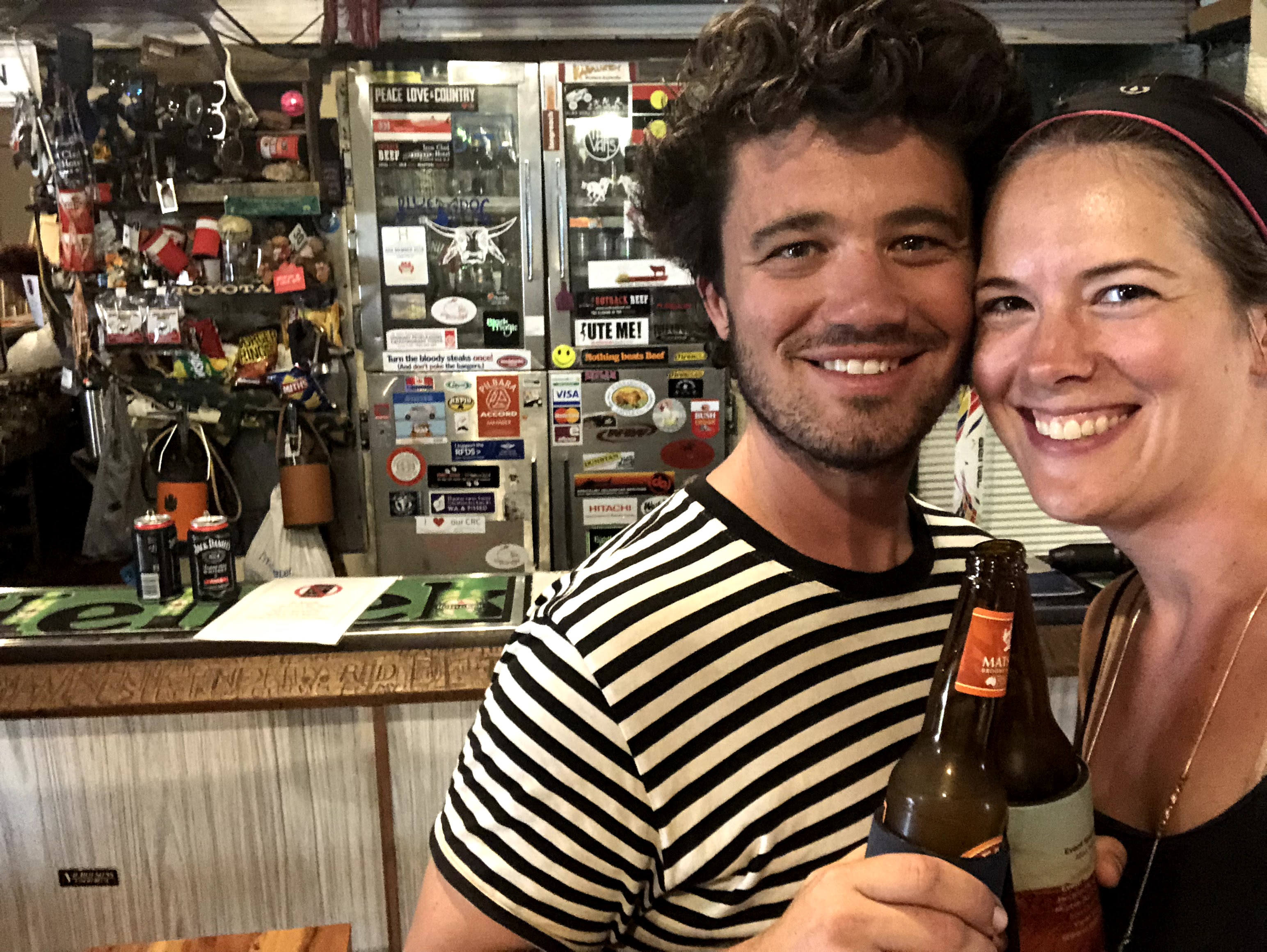
It seemed destined to be a bush pub kind of day, since that night we pulled into another isolated pub (not in the book though), Whim Creek Hotel. This place was awesome – full of character, great food, friendly staff, and offering free camping in the front parking lot. What a great idea for a place like this in the middle of nowhere to offer free camping – the fact that we were staying out front meant we were able to have dinner, a few drinks, and a couple games of pool whereas otherwise we might have stopped for a single drink and then moved on.

I woke up the next morning to hear something or someone slowly circling the tent. This isn’t an unusual occurrence – normally it’s a kangaroo or a cow looking for a bit of food – but this morning was something special!

This fellow hung out with us until we were packed up and leaving. Magic. Peacocks aren’t native to Australia, so they’re a bit of a pest, but how can you not find them absolutely stunningly gorgeously beautiful.

From Whim Creek it was off to Point Samson, a small cute coastal town that had been recommended by our Lonely Planet guidebook as worth a stop. It certainly was worth the short detour, it’s got a great vibe, with a gorgeous beach where we stopped for a coffee and again to excitedly dip our toes in the water (we are very excited to be past the area of northern Australia where crocodiles and jellyfish generally roam, although we heard a crocodile was spotted on the boat ramp at Point Samson the day after we left, so hopefully they aren’t following us around!)
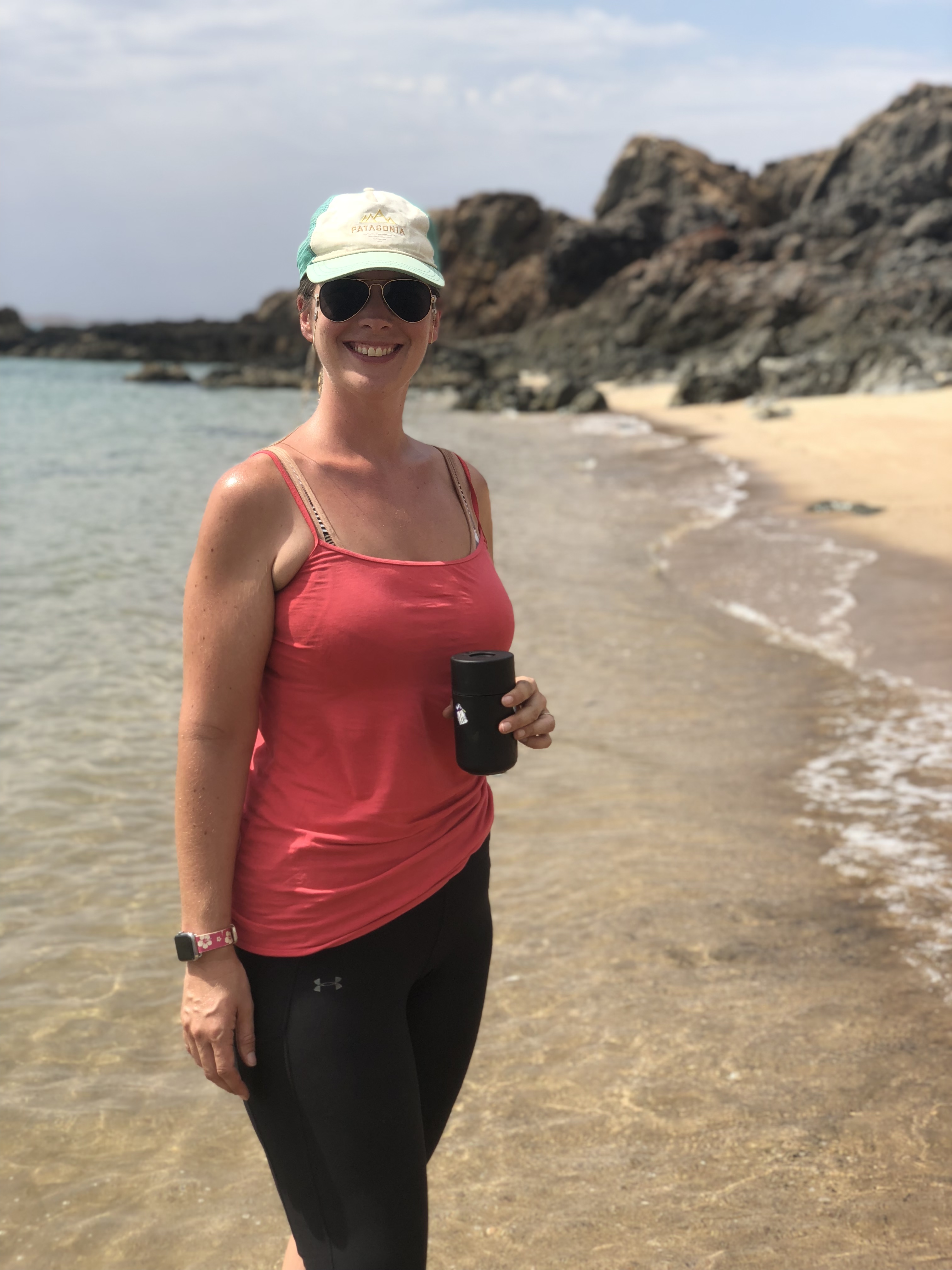
Point Samson also had a great little 4wd track along the cliffs by the beach, which we drove up and stopped for lunch and a great view. Finding places like this is what this trip is all about for us. We’re finding much more joy in the more rough, isolated spots than in the popular tourist spots. I suppose that should be obvious in hindsight, but living this trip has been an exercise in “thinking about something isn’t the same as experiencing it.

After a morning spent at Point Samson we moved on to our next campsite. We had seen a place on WikiCamps called 40 Mile Beach, which was free during the off-season (which is now), and looked promising with oceanfront sites and a high rating. It definitely lived up to – and surpassed – our expectations. We were one of three vehicles there, and had an amazing secluded site right on the rocky beach. We loved it here – this is what it’s all about!!
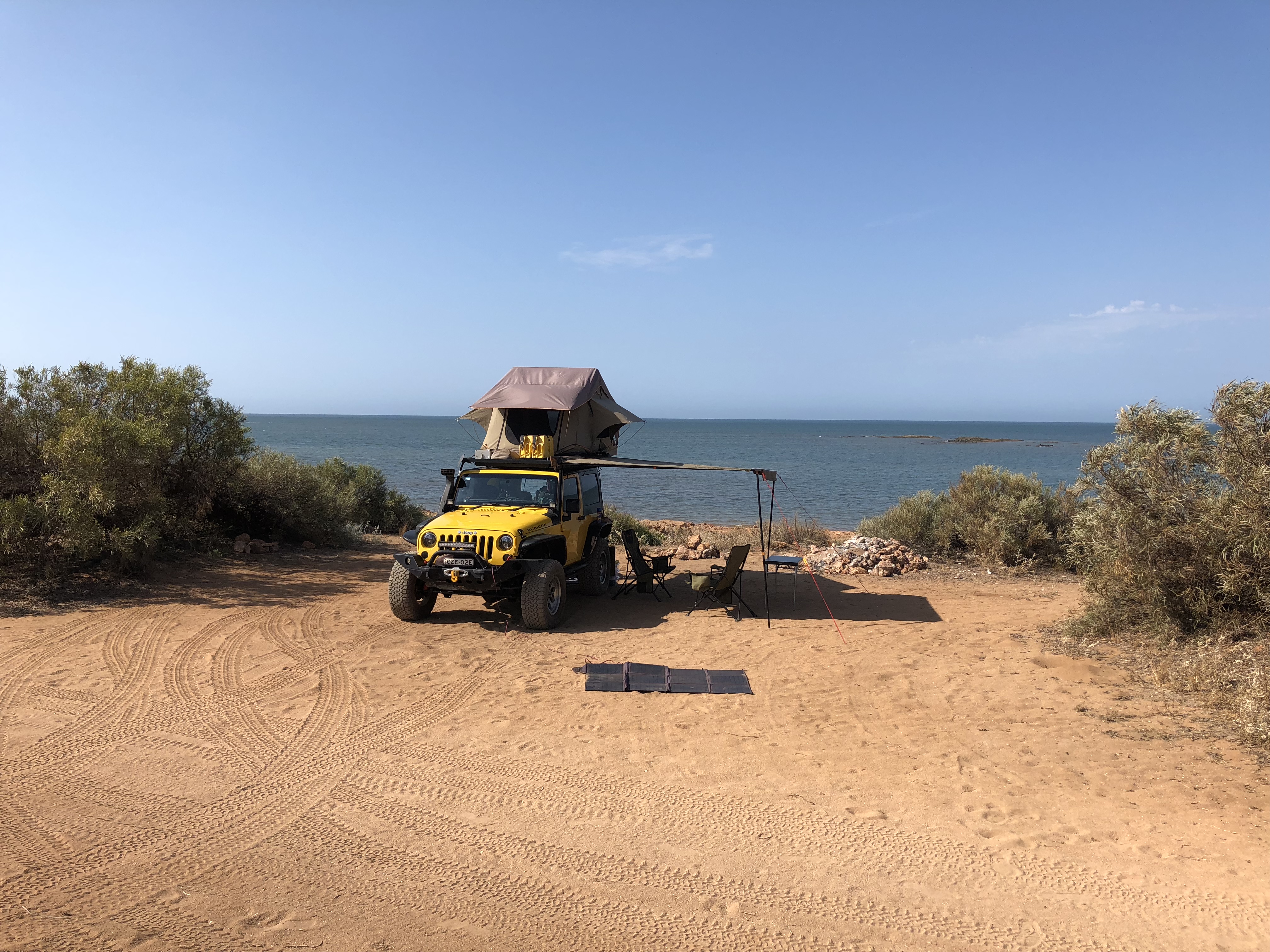
One thing we found interesting is that in this area of Australia, the tides are absolutely massive. In Broome for example, they were expecting a 9 metre (27 feet) tide one of the days we were there. That’s HUGE! For our friends who aren’t versed in tide tables, a typical high tide at a beach in Sydney would be 2 metres (6 feet) and low tide around 0.5 metre (1.5 feet). What this means in practical terms at this campsite is that if we wanted to swim, we’d need to do so around high tide, since at low tide you’d need to walk quite far to get to the water…here’s a couple of photos I took to show the difference in high tide and low tide.
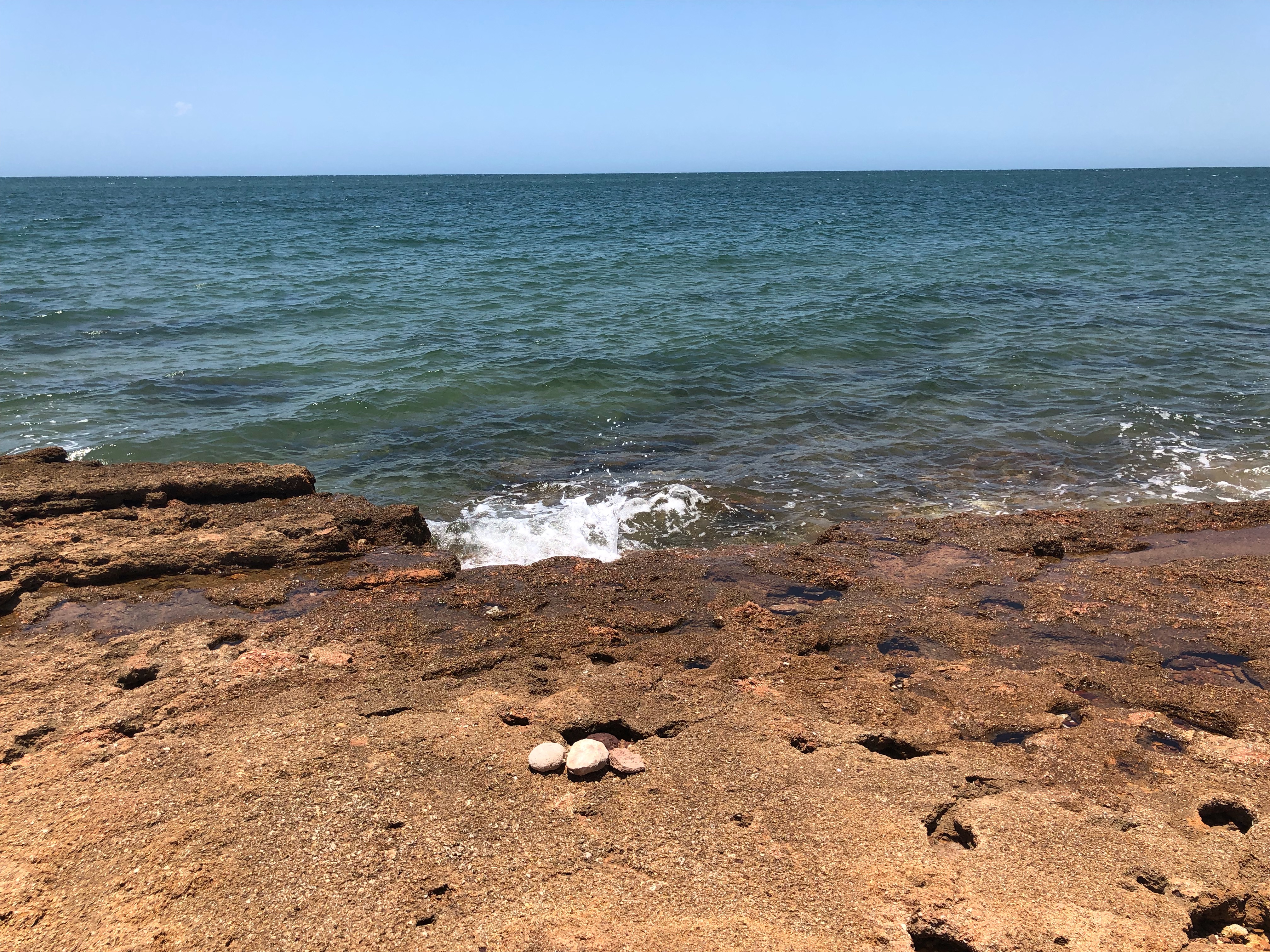
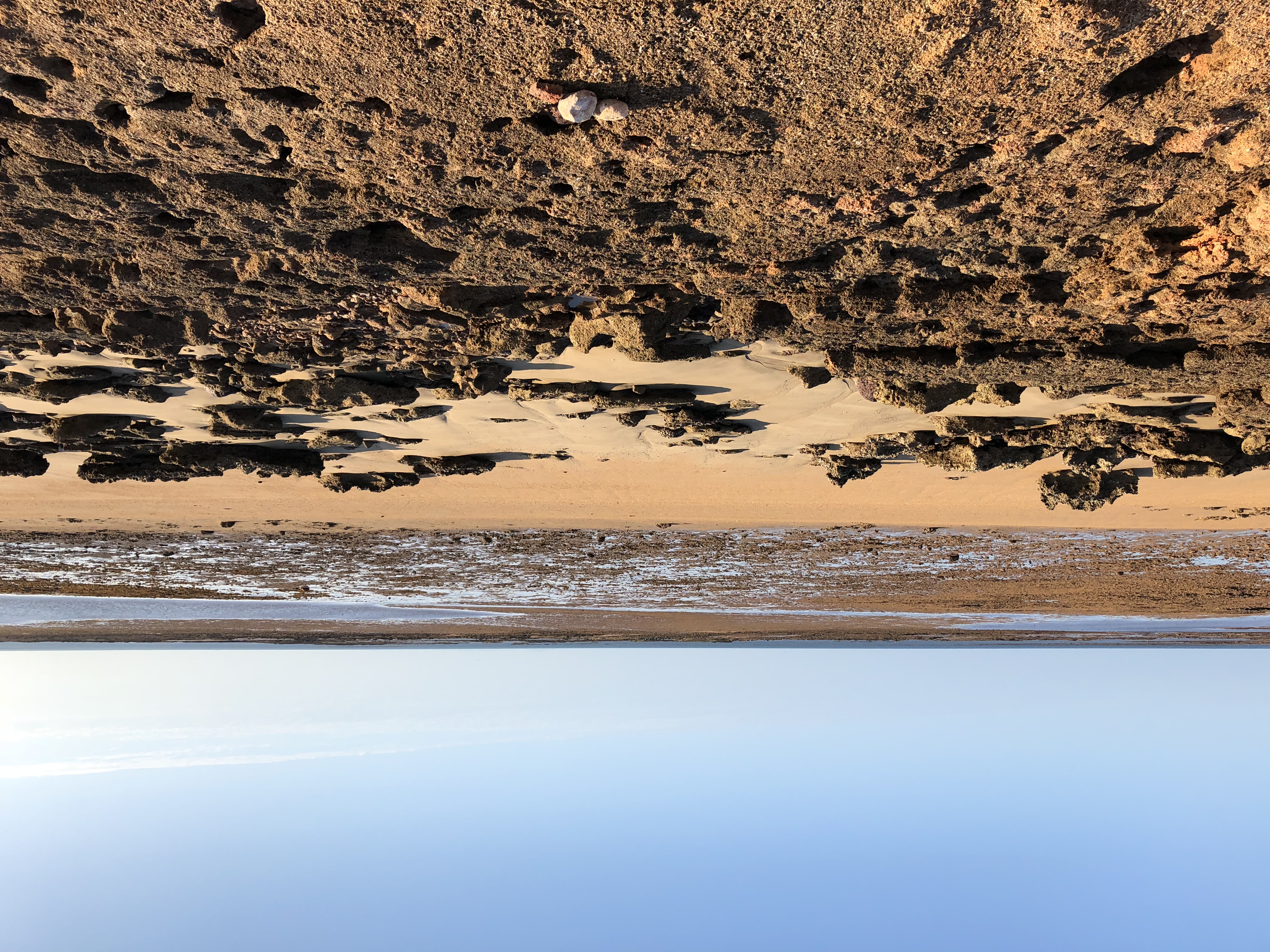
The swimming was just beautiful, reminded us of Sydney with cool waters, and no crocs!!! We saw heaps of fish jumping around, and a pod of dolphins feeding and playing offshore. 40 Mile Beach is an absolutely magical spot.
From here, it’s a straight-ish shot down highway 1 to Exmouth. There isn’t much in between 40 Mile Beach and Exmouth, just a few roadhouses and mining towns. We usually stop at a roadhouse or two for a fuel top up and an overpriced bacon egg roll – got to support the people who are supporting long trips like ours!
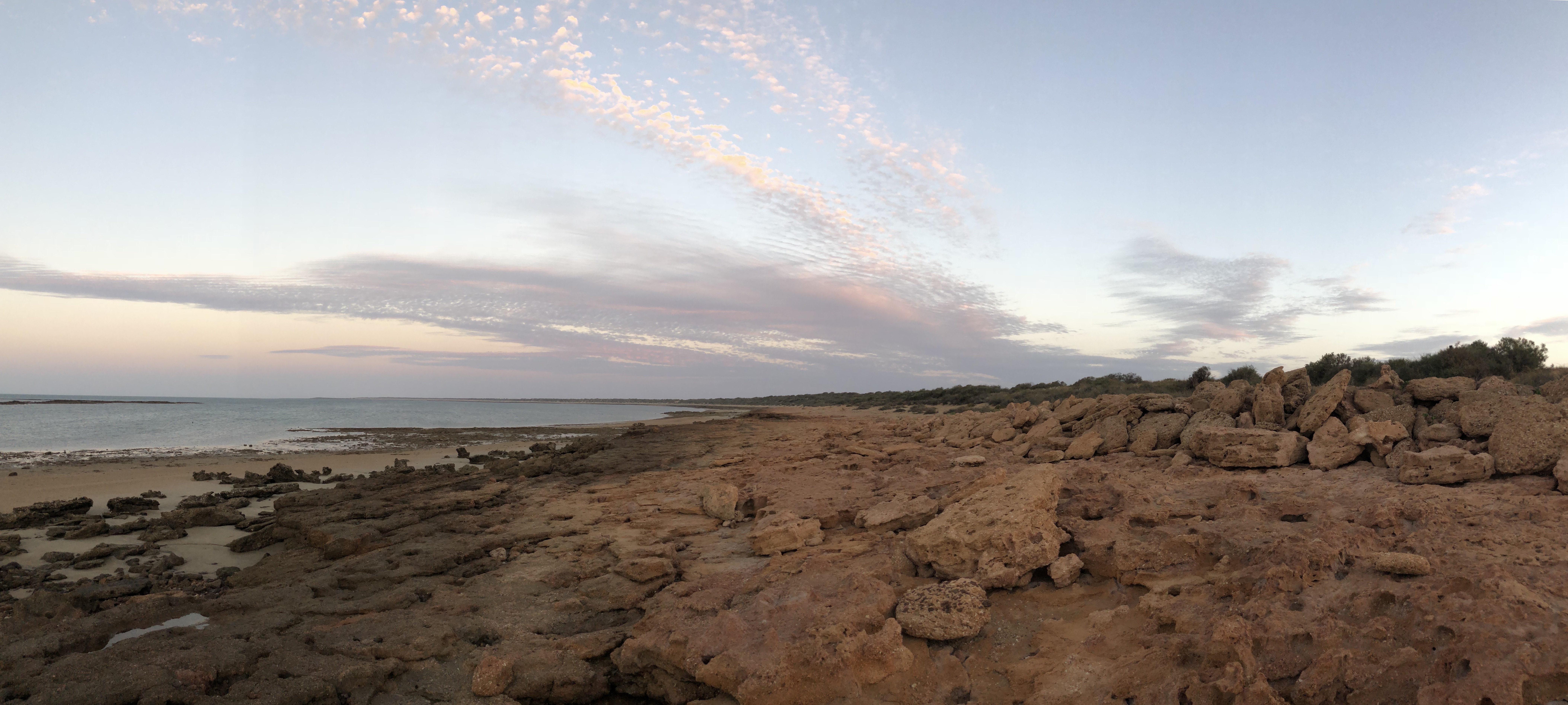
PS: Aussie-savvy readers will clue in that we missed a couple of big must-dos on this leg, namely Karijini National Park, Millstream Chichester National Park, Tom Price, and a few other places in the Pilbara. We’re coming back this way in April/May for the Gibb River Road, and decided to check out the inland areas at that point, when it isn’t so hot! Right now it’s just too warm in the Kimberley and Pilbara areas to enjoy much of what they have to offer.
